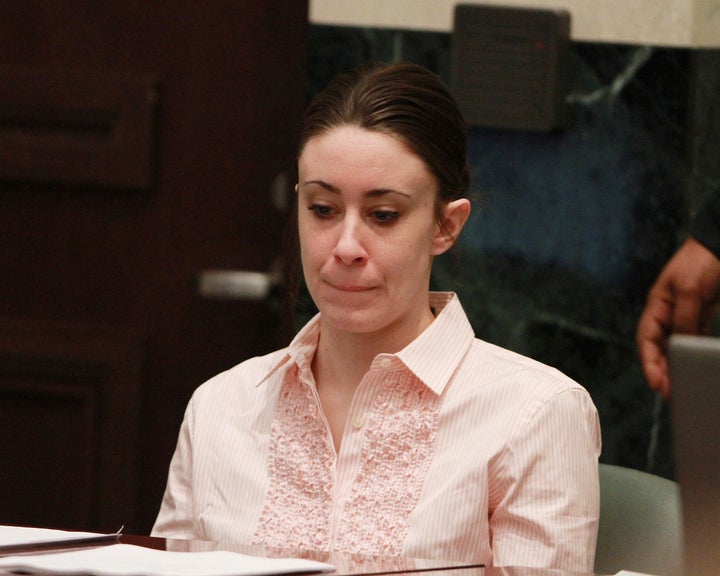
The Casey Anthony trial was all about moral judgment -- the moral judgment of Casey Anthony, and in the end, the final judgment of the jury. How do people make moral judgments? How do they choose A over B? Especially given the shocking nature of the jurors' decision, how can we better understand their decision process?
In 2001, researchers at Princeton University began a new line of experiments about how the human brain computes moral judgments. The experiments of Green and Cohen suggested that morality may come from two sources in the brain. There may be two flavors of human morality that sometimes come into conflict with each other.
Volunteers were asked to think about moral dilemmas. For example, would you push one person in front of a train to save five others? While thinking about the dilemma, the subjects were scanned in an MRI to measure the oxygenated blood flowing through the brain. The more oxygenated blood flowing into a specific brain area, the more active the area. What areas of the brain become active when people compute moral judgments? It depends on the moral dilemma. Some moral judgments can be made intellectually, by semantic rule, with little engagement of emotion. Other moral dilemmas provoke an emotional reaction that alters our moral views, contradicts rationality, and recruits different brain areas.
One of the favored tests of moral reasoning is the distinctly perverse trolley dilemma. And here I must apologize to my readers. If the examples given below seem too raw on the heels of a murder trial, keep in mind that the science of morality uses such raw examples in order to get at the issue. In the trolley dilemma, a trolley is about to run over five people. You can save the five people by pulling a lever. The lever will divert the trolley to a different track, where it will kill only one person. Would you pull the lever? Many people weigh the five against the one and reply that they might pull the lever. They judge the action to be morally justified. But it is not an easy judgment.
Now suppose that, to save the five people, you must actively push one person in front of the trolley thereby stopping it. This version of the story puts you in such physical proximity to the act of murder that it provokes a stronger emotional reaction. Your rationality comes into conflict with your gut revulsion. Regions of the brain involved in conflict become active. Most people claim they would not push a person to his death to save five others.
In yet another variant of the story, the trolley is going to kill one person. If you pull a lever, the trolley will be diverted to a different track where it will kill five people. Here the answer is obvious to everyone. Simply do nothing. Withhold action, and the least harm is done. This easy decision recruits areas of the brain involved in higher order thought, but does not engage the emotions as much.
The curious property of these many variants is that, effectively, they are the same. In each case you must make a decision. If you choose A, five people die. If you choose B, one person dies. Yet depending on the immediacy of the scenario, and therefore how much emotion is engaged, people tend to respond differently, and indeed to draw on different brain mechanisms for computing morality. The right moral decision can seem perfectly obvious, and yet diametrically opposite, depending on the framing of the question and the brain mechanisms that are tapped.
How does this psychology and neuroscience relate to Casey Anthony?
As I watched the jury announce the verdict of Not Guilty, and felt the same astonishment that the rest of the pubic felt, and as I saw outrage ripple through the media and the public, I realized that we were witnessing a textbook example of the two different kinds of morality. One is rational, intellectual, and evidence based. The other is an immediate emotional response that sweeps away the rational. It is a gut revulsion. Here we have the trolley dilemma all over again.
The jurors were charged with the task of weighing the evidence rationally and inferring whether A was proven or whether B had some probability. Yet the public, the para-jury you might say, the national collection of us watching from a distance and forming our own opinions -- we pursued a different approach. Our task was to decide what we felt about the case, the characters involved, and especially the little girl. It is a sad and upsetting case. TV pundits, especially, framed the case in terms of an emotional revulsion toward the crime and the accused. Under these two different ways to frame the moral dilemma, given the science, it is not surprising that the jury and the public arrived at diametrically opposite decisions, and moreover, that the side of moral right should seem so terribly obvious to everyone. Frame the question one way, recruit one set of brain mechanisms, and A is the morally right choice. Acquit. Frame the question differently, engage a different set of brain mechanisms, and B becomes the obvious moral choice. Convict.
For my part, I now believe the jury made exactly the right decision under the circumstances given the task they were assigned. It was not an enviable task.
The decision of the jury, and the public's moral outrage, are to some extent scientifically understandable because they are part of a normal human pattern. Understanding Casey Anthony, on the other hand, is more difficult. Neuroscience tends to examine the norm rather than the abnormal. Yet if science can help us understand the normal mechanisms of morality in the human brain, then perhaps we will someday develop a better understanding of how those mechanisms can go wrong and what might be done to prevent it.